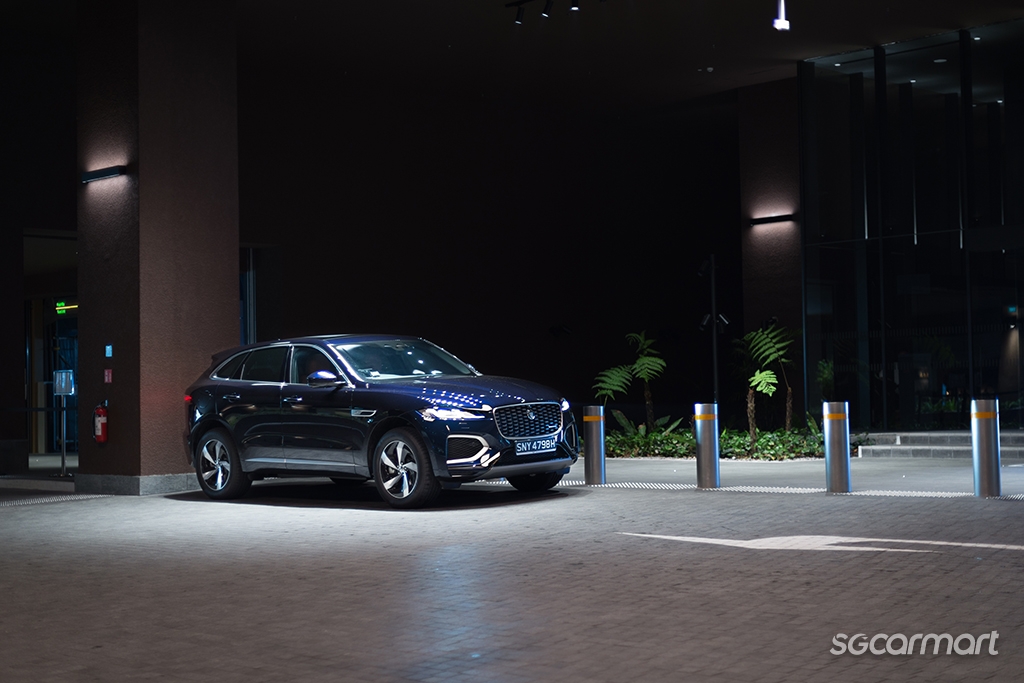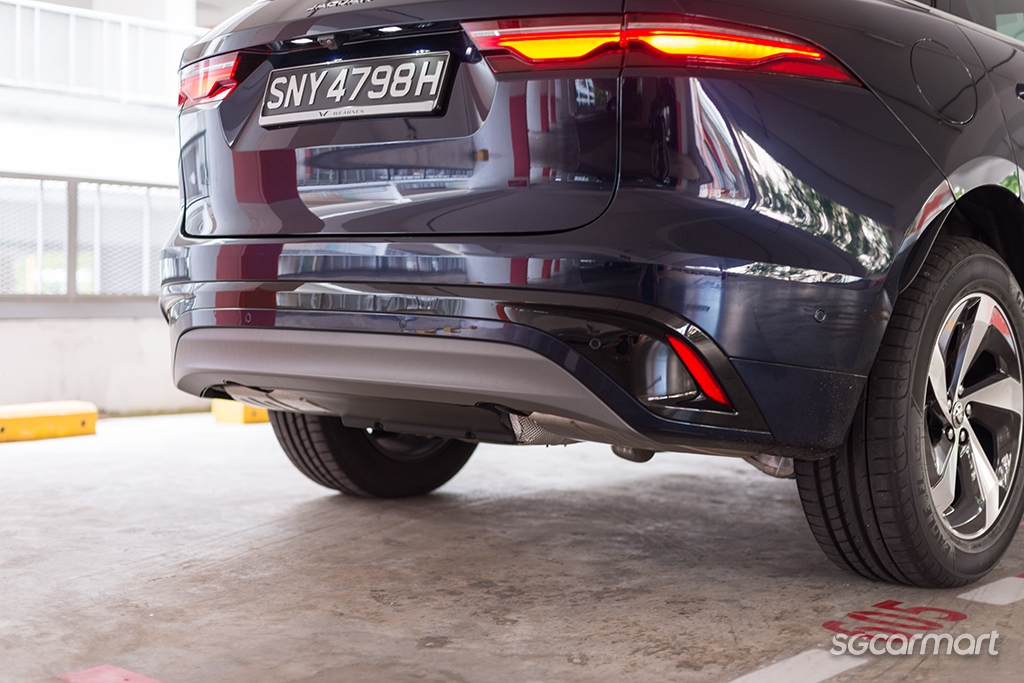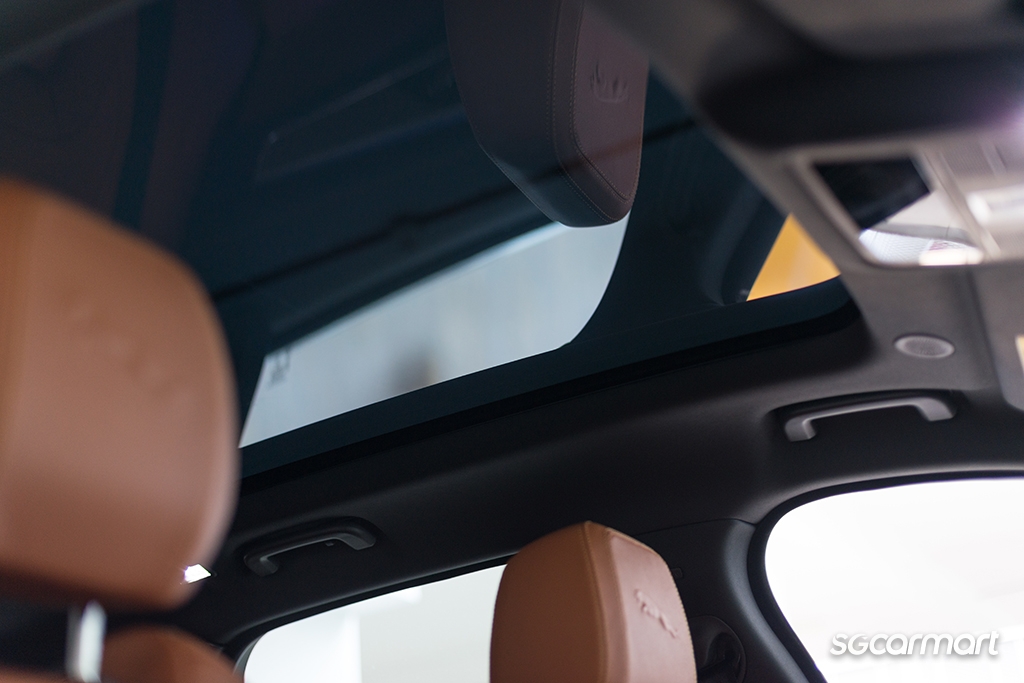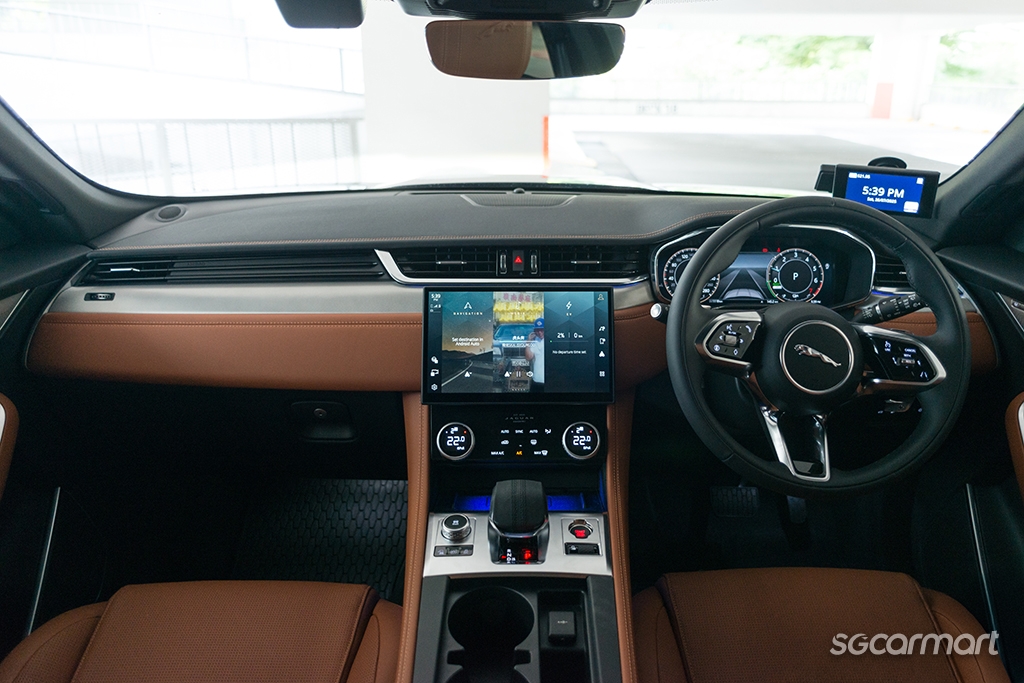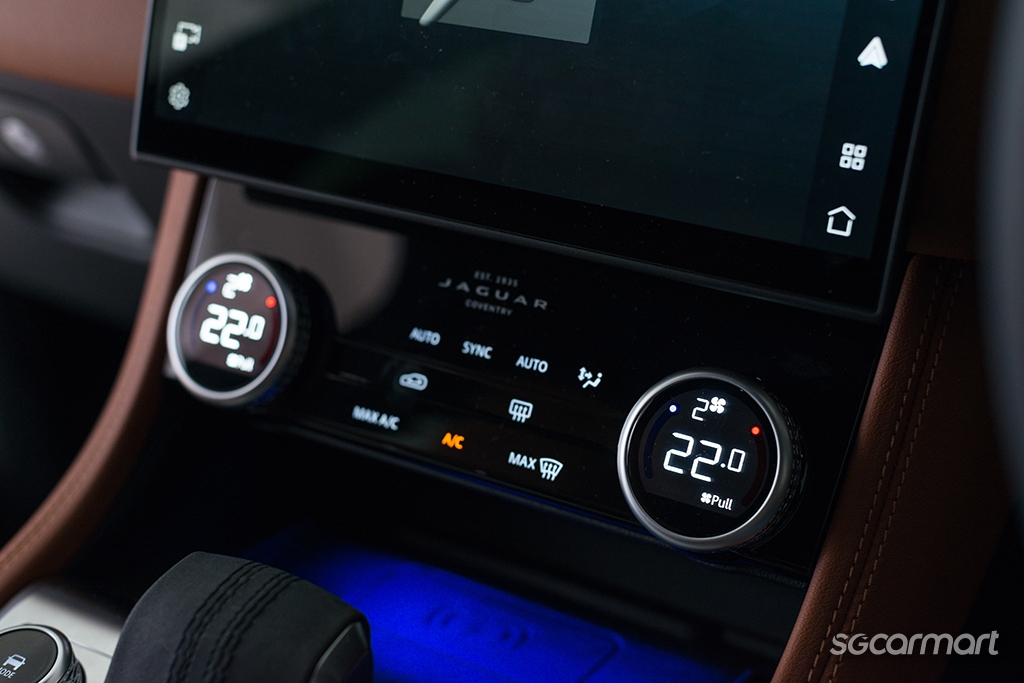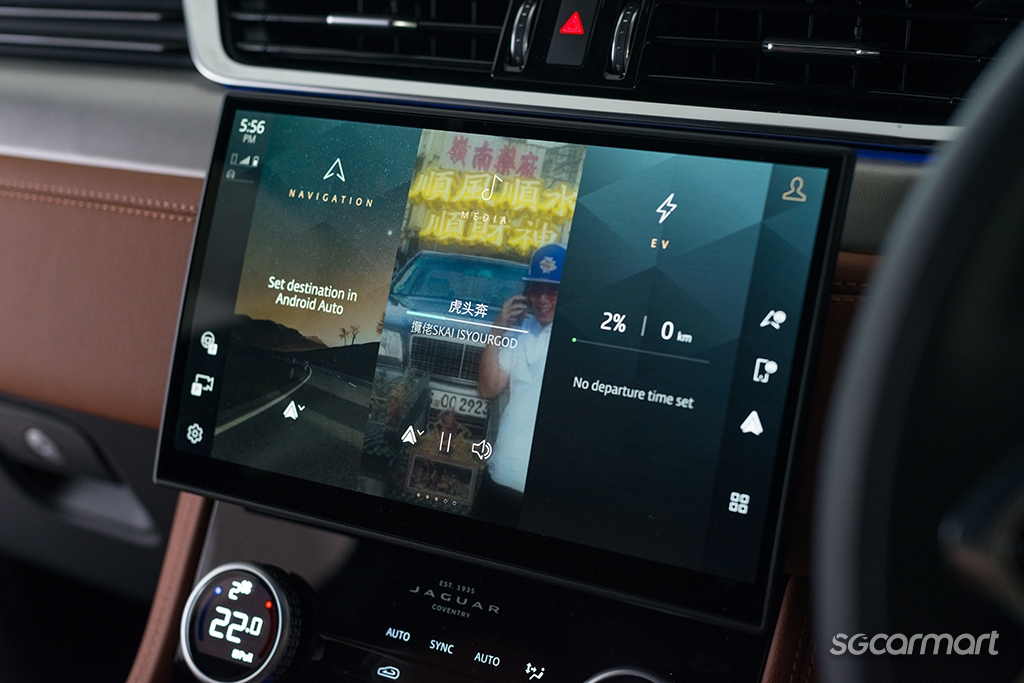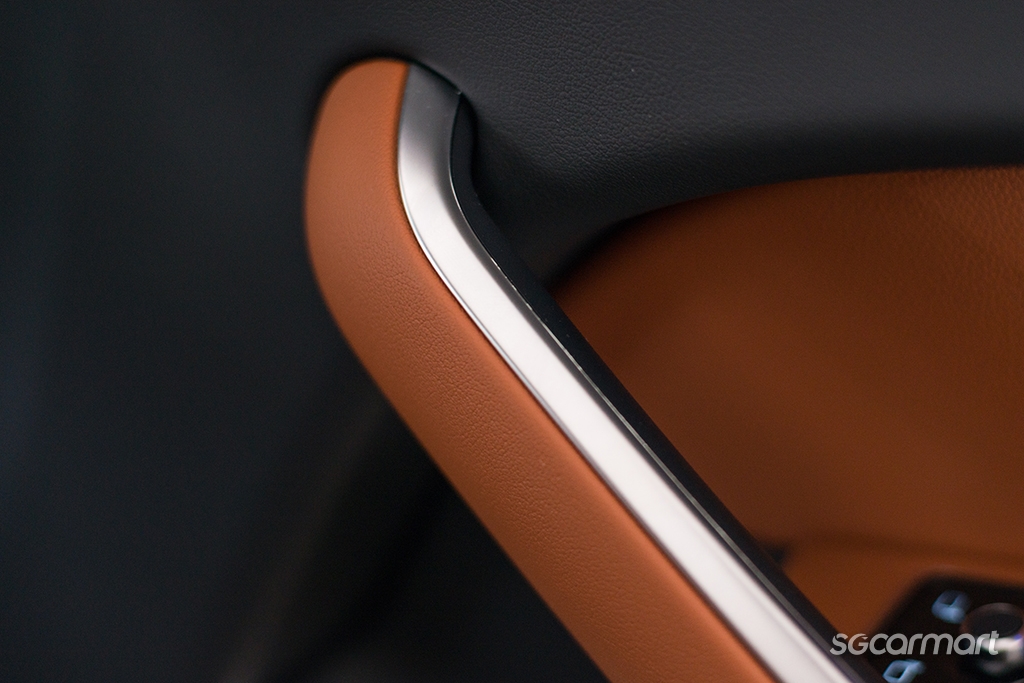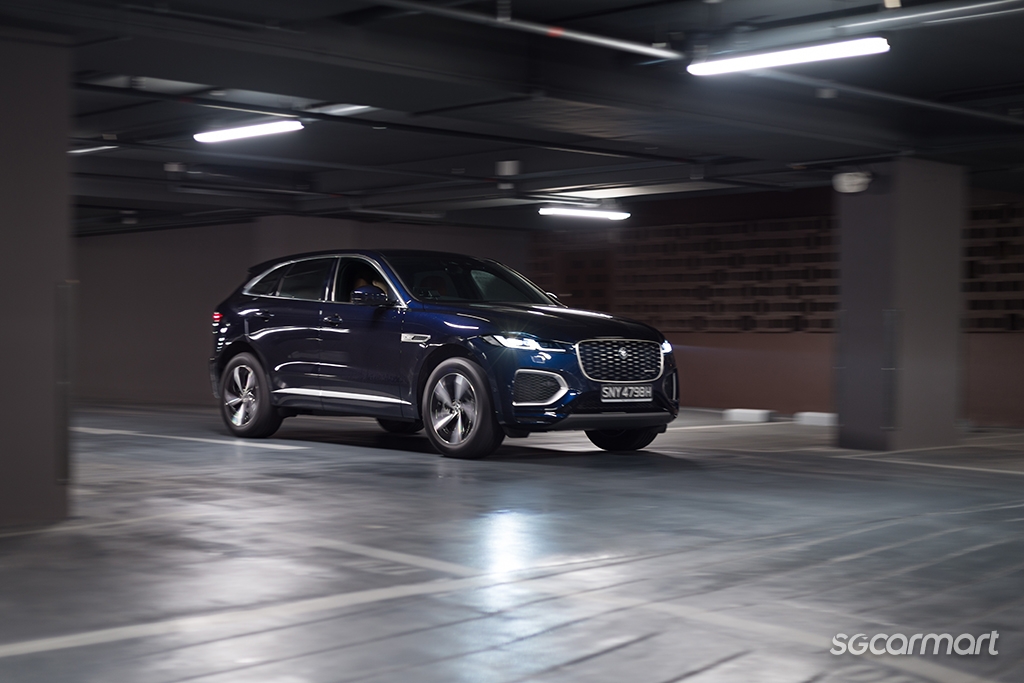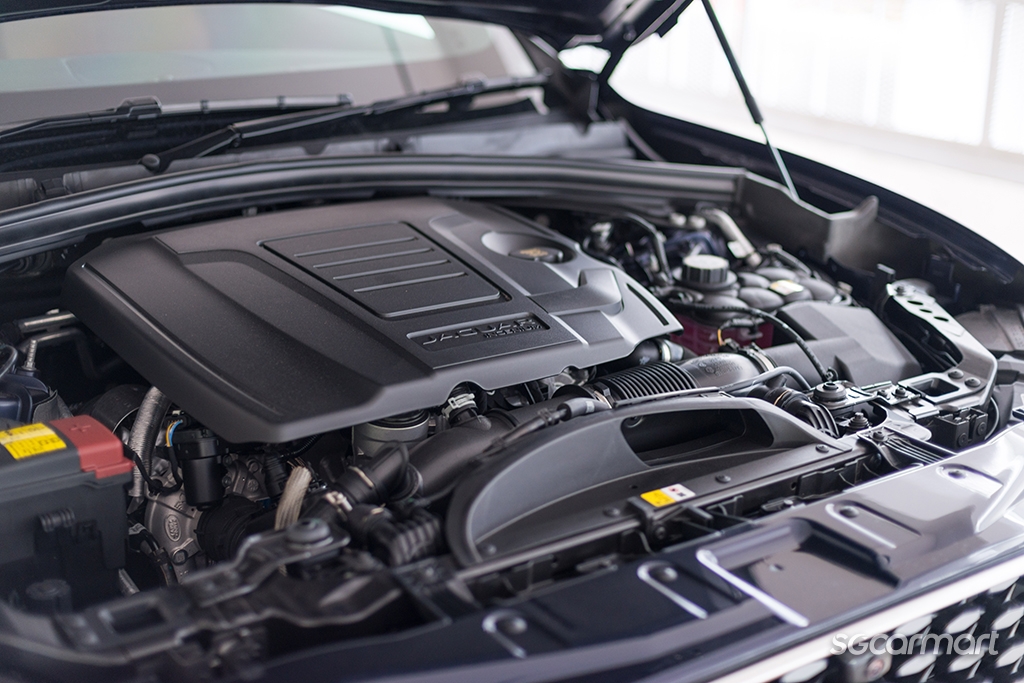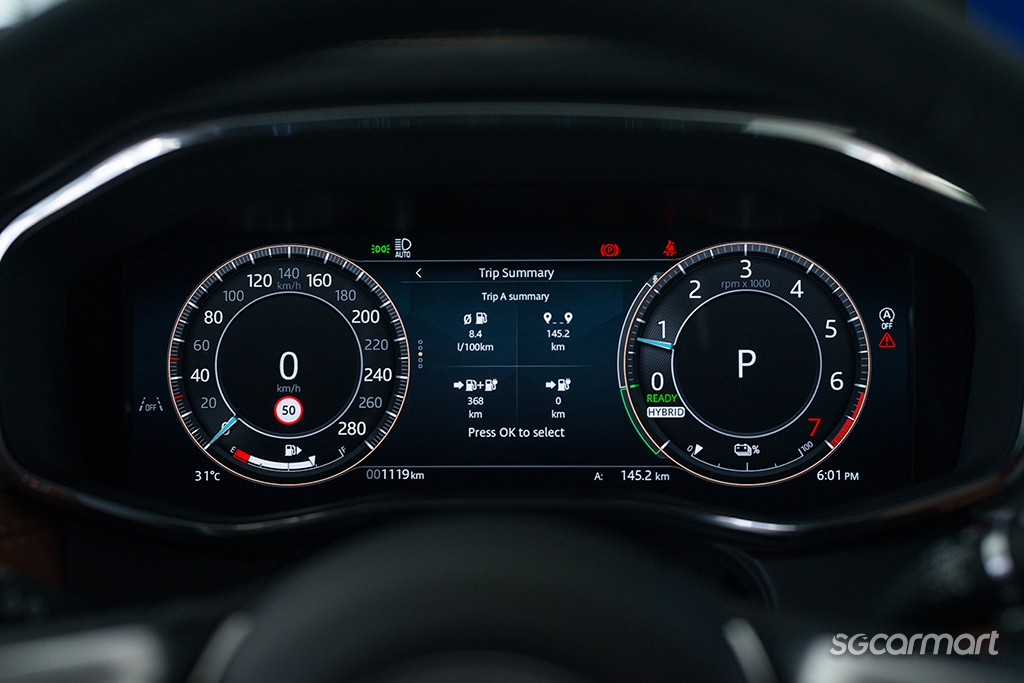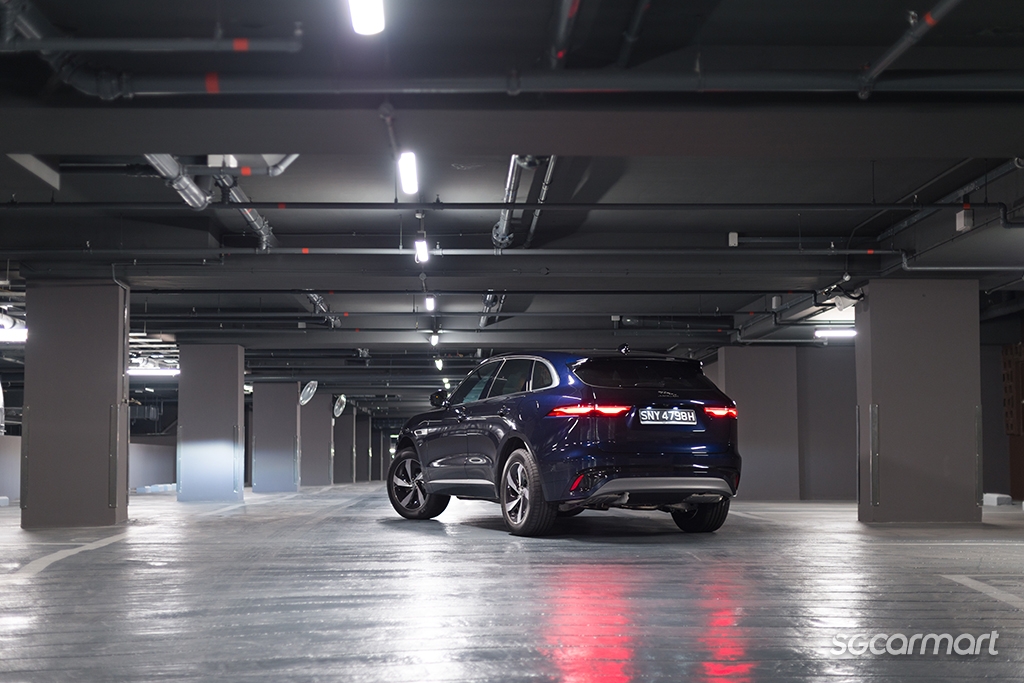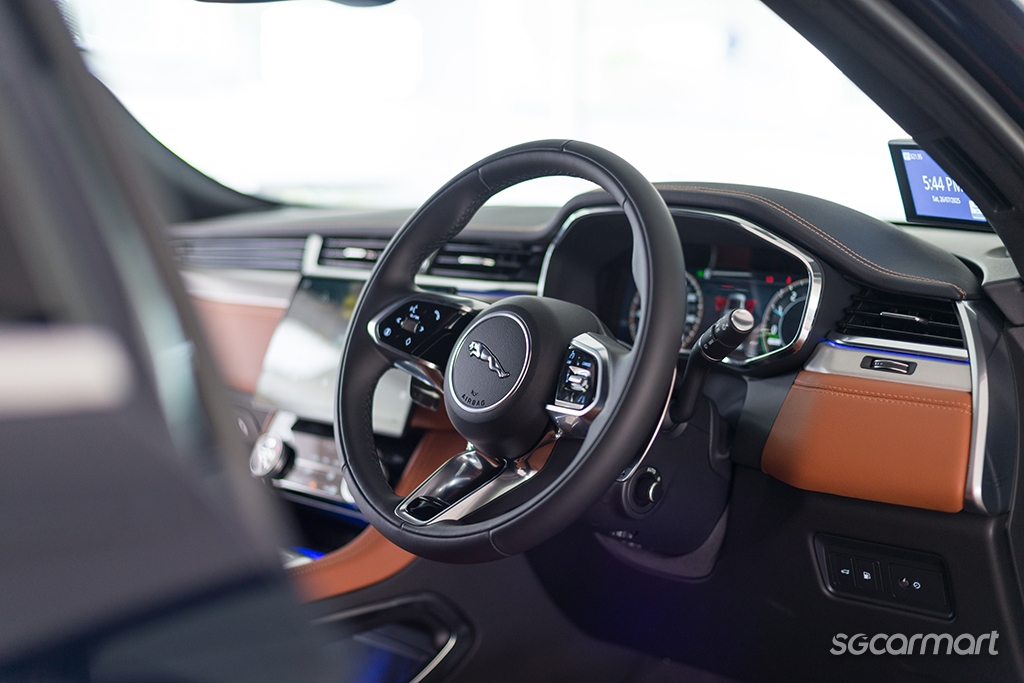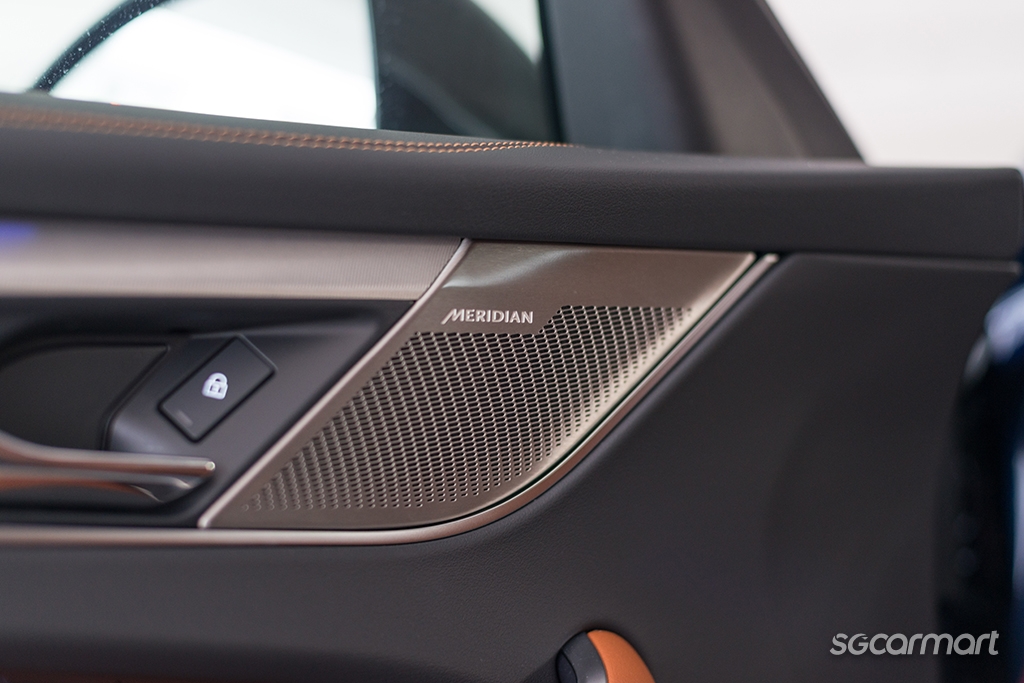Jaguar F-PACE R-Dynamic S Plug-in Hybrid Review
31 Jul 2025|8,928 views
What We Like
Refined and powerful drivetrain
Well-insulated cabin
Great balance between handling and comfort
Luxurious and well-appointed interior
Manual air-con vents and physical climate control knobs and buttons
What We Dislike
Car doesn't really charge the battery, so you'll need access to a charger to reap the hybrid benefits
Unimpressive fuel economy
The Jaguar F-PACE isn't a new car. Originally introduced in 2016, the car is almost a decade old, and the facelifted model is also four years old by now. Add to that the fact that Jaguar's in the midst of a major rebranding exercise, and you'll understand my surprise when I was told that there's a new F-PACE for me to review.
For the most part, this F-PACE is the same car as the 2021 facelifted model, with the main difference being the Plug-in Hybrid powertrain that it is now equipped with. Four years isn't too long, but what matters is that in these past four years, the automotive landscape has shifted vastly. (Specifically, 2021 marked the start of the influx of Chinese EVs, which changed the game entirely.) Entry-level cars are now equipped with high-tech driving assistance systems, ventilated seats, massive touchscreens and motorised air-con vents without physical controls.
So, the question is: Is there actually any reason for one to opt for a luxury car that has remained all but unchanged since a time before the EV influx here?
Don't fix it if it isn't broken
Those familiar with the F-PACE wouldn't even bat an eyelid if this new Plug-in Hybrid model drives past them, because it looks exactly the same as before on the outside - there isn't even any badging on the car to hint at the new powertrain.
For those that remember the original F-PACE, the facelift gave this car some nuanced updates that included slimmer LED head and taillights, updated bumpers, and a grille that featured countless outlines of the original Jaguar emblem as a design element.
The Plug-in Hybrid version in Singapore also gets a panoramic roof as standard equipment - this is one way you can tell it apart from the older cars. While the car has remained almost exactly the same as before, I would say that the design of the F-PACE has aged rather well; it is still a bold and suave SUV, with much more character than the aerodynamic blobs we get these days.
Old-school charm beats modern minimalist tech
I've been going on about how dated this F-PACE is, but that isn't to say that 'old-school' is a bad thing. In fact, being unchanged since 2021 means this is a car that is still equipped with tactile buttons and knobs.
Manually adjustable air-con vents and physical climate control knobs and buttons are scarce commodities these days
I didn't realise how much I missed having the means to reach out and adjust things like the fan speed and the direction of the air-vent without having to meddle with a touchscreen to access the options, which are often buried behind multiple touches.
The F-PACE's interior is the prime example of a luxury automotive interior done right. While many brands these days attempt to create a luxurious space by using leather, chrome other shiny bits, the results often fall short of expectations.
Excellent use of materials in adequate parts of the cabin has created a luxurious and cohesive interior
With this Jaguar, there's good use of leather; the seats and the bottom half of the dashboard are a tasteful shade of brown, with the glovebox and the top half of the dashboard are in black, resulting in a clean, 'floating' look. The silver and black plastics all work together with the rest of the interior to create a cohesive environment that exudes class. Finally, the minimal use of Piano Black plastics where the climate control knobs are completes the luxurious look of the cabin.
Meanwhile, the adequately-sized 11.4-inch PIVI Pro display is slightly curved to match the curvature of the dashboard - an aesthetic decision that you don't see often.
The only gripe I have about the interior are the plastic pieces on the front doors' grab handles, whose edges aren't deburred.
After spending four days with the car, I can tell you that old is not always worse. I enjoyed the classy interior, and the fact that I didn't have to fumble with the touchscreen every single time I tried to adjust the air-con vents or the cabin temperature.
Now, let's get on to the biggest new bit on this car: Its Plug-in Hybrid drivetrain. On this F-PACE, a 2.0-litre turbocharged engine works together with an electric motor to put out a combined output of 398bhp and 640Nm of torque (the motor itself puts out 141bhp and 275Nm of torque).
While the powertrain is refined and silent for the most part, we noticed that the battery stays flat after 50-odd km of pure electric drive
The official figures put 0-100km/h at an impressive 5.3 seconds, and it definitely feels like it. The Plug-in Hybrid system on this car is, however, of the traditional type, whereby the battery would stay flat after you have depleted it, negating its benefits once you have used up the 50-odd km of pure electric range. As a result, its real-world fuel efficiency isn't particularly great - I managed just over 10km/L after driving for 346km.
Although the engine's response leaves much to be desired, it offers a refined and comfortable experience, staying almost completely silent under 3,000rpm. Get past that and you'll get a powerful surge of power that propels the bulky SUV forward at a great pace.
It doesn't take the latest tech for a great drive
The F-PACE Plug-in Hybrid is a little behind when it comes to tech. Although it's equipped with park assist, the interface is a far cry from the best systems out there; it failed to park along an entire row of empty lots when I tried.
While equipped with park assist, it didn't work as well as systems found on newer, but more affordable cars
But the rest of the drive more than makes up for its shortcomings. The car manages a sporty handling with controlled body roll without ever feeling crashy. The suspension soaks up bumps and ruts like a champ, and the insulation is top notch. While it isn't the most high-tech, the car is equipped with adaptive cruise control and lane centering, taking the load off the driver while driving for long distances on expressways. It also has wireless Android Auto and Apple CarPlay.
These amenities, along with the luxurious and well-designed interior, made the F-PACE Plug-in Hybrid a pleasant drive - so pleasant that I almost emptied the entire fuel tank, driving it extensively over the weekend that I had the car with me.
With a price tag in the ballpark of $350,000 ($237,888 without COE), there are many worthy competitors in the market for SUVs, such as the Volvo XC60 if you are strictly comparing plug-in hybrids; otherwise, options such as the BMW X3 and the Mercedes-Benz GLC can also be considered. And if you were to consider contemporary EVs, your choices would widen to include cutting-edge new names such as the AVATR 11.
Normally, being a dated product in an ever-changing and fast-growing industry would spell disaster, but in this case, the old-school charms of the Jaguar F-PACE actually give it an edge over many other cars in the market. We'll answer our earlier question: This SUV has aged beautifully like a fine wine, but it might take a certain someone to appreciate it. Now the only one left to ask is: Would that person be you?
These reviews may also interest you
The all new third generation Audi Q5 is a favourite in its class
The updated Volvo XC60 T8 is a delightful plug-in hybrid SUV
A new plug-in hybrid drivetrain gives the Land Rover Defender new green credentials
What We Like
Refined and powerful drivetrain
Well-insulated cabin
Great balance between handling and comfort
Luxurious and well-appointed interior
Manual air-con vents and physical climate control knobs and buttons
What We Dislike
Car doesn't really charge the battery, so you'll need access to a charger to reap the hybrid benefits
Unimpressive fuel economy
The Jaguar F-PACE isn't a new car. Originally introduced in 2016, the car is almost a decade old, and the facelifted model is also four years old by now. Add to that the fact that Jaguar's in the midst of a major rebranding exercise, and you'll understand my surprise when I was told that there's a new F-PACE for me to review.
For the most part, this F-PACE is the same car as the 2021 facelifted model, with the main difference being the Plug-in Hybrid powertrain that it is now equipped with. Four years isn't too long, but what matters is that in these past four years, the automotive landscape has shifted vastly. (Specifically, 2021 marked the start of the influx of Chinese EVs, which changed the game entirely.) Entry-level cars are now equipped with high-tech driving assistance systems, ventilated seats, massive touchscreens and motorised air-con vents without physical controls.
So, the question is: Is there actually any reason for one to opt for a luxury car that has remained all but unchanged since a time before the EV influx here?
Don't fix it if it isn't broken
Those familiar with the F-PACE wouldn't even bat an eyelid if this new Plug-in Hybrid model drives past them, because it looks exactly the same as before on the outside - there isn't even any badging on the car to hint at the new powertrain.
For those that remember the original F-PACE, the facelift gave this car some nuanced updates that included slimmer LED head and taillights, updated bumpers, and a grille that featured countless outlines of the original Jaguar emblem as a design element.
The Plug-in Hybrid version in Singapore also gets a panoramic roof as standard equipment - this is one way you can tell it apart from the older cars. While the car has remained almost exactly the same as before, I would say that the design of the F-PACE has aged rather well; it is still a bold and suave SUV, with much more character than the aerodynamic blobs we get these days.
Old-school charm beats modern minimalist tech
I've been going on about how dated this F-PACE is, but that isn't to say that 'old-school' is a bad thing. In fact, being unchanged since 2021 means this is a car that is still equipped with tactile buttons and knobs.
Manually adjustable air-con vents and physical climate control knobs and buttons are scarce commodities these days
I didn't realise how much I missed having the means to reach out and adjust things like the fan speed and the direction of the air-vent without having to meddle with a touchscreen to access the options, which are often buried behind multiple touches.
The F-PACE's interior is the prime example of a luxury automotive interior done right. While many brands these days attempt to create a luxurious space by using leather, chrome other shiny bits, the results often fall short of expectations.
Excellent use of materials in adequate parts of the cabin has created a luxurious and cohesive interior
With this Jaguar, there's good use of leather; the seats and the bottom half of the dashboard are a tasteful shade of brown, with the glovebox and the top half of the dashboard are in black, resulting in a clean, 'floating' look. The silver and black plastics all work together with the rest of the interior to create a cohesive environment that exudes class. Finally, the minimal use of Piano Black plastics where the climate control knobs are completes the luxurious look of the cabin.
Meanwhile, the adequately-sized 11.4-inch PIVI Pro display is slightly curved to match the curvature of the dashboard - an aesthetic decision that you don't see often.
The only gripe I have about the interior are the plastic pieces on the front doors' grab handles, whose edges aren't deburred.
After spending four days with the car, I can tell you that old is not always worse. I enjoyed the classy interior, and the fact that I didn't have to fumble with the touchscreen every single time I tried to adjust the air-con vents or the cabin temperature.
Now, let's get on to the biggest new bit on this car: Its Plug-in Hybrid drivetrain. On this F-PACE, a 2.0-litre turbocharged engine works together with an electric motor to put out a combined output of 398bhp and 640Nm of torque (the motor itself puts out 141bhp and 275Nm of torque).
While the powertrain is refined and silent for the most part, we noticed that the battery stays flat after 50-odd km of pure electric drive
The official figures put 0-100km/h at an impressive 5.3 seconds, and it definitely feels like it. The Plug-in Hybrid system on this car is, however, of the traditional type, whereby the battery would stay flat after you have depleted it, negating its benefits once you have used up the 50-odd km of pure electric range. As a result, its real-world fuel efficiency isn't particularly great - I managed just over 10km/L after driving for 346km.
Although the engine's response leaves much to be desired, it offers a refined and comfortable experience, staying almost completely silent under 3,000rpm. Get past that and you'll get a powerful surge of power that propels the bulky SUV forward at a great pace.
It doesn't take the latest tech for a great drive
The F-PACE Plug-in Hybrid is a little behind when it comes to tech. Although it's equipped with park assist, the interface is a far cry from the best systems out there; it failed to park along an entire row of empty lots when I tried.
While equipped with park assist, it didn't work as well as systems found on newer, but more affordable cars
But the rest of the drive more than makes up for its shortcomings. The car manages a sporty handling with controlled body roll without ever feeling crashy. The suspension soaks up bumps and ruts like a champ, and the insulation is top notch. While it isn't the most high-tech, the car is equipped with adaptive cruise control and lane centering, taking the load off the driver while driving for long distances on expressways. It also has wireless Android Auto and Apple CarPlay.
These amenities, along with the luxurious and well-designed interior, made the F-PACE Plug-in Hybrid a pleasant drive - so pleasant that I almost emptied the entire fuel tank, driving it extensively over the weekend that I had the car with me.
With a price tag in the ballpark of $350,000 ($237,888 without COE), there are many worthy competitors in the market for SUVs, such as the Volvo XC60 if you are strictly comparing plug-in hybrids; otherwise, options such as the BMW X3 and the Mercedes-Benz GLC can also be considered. And if you were to consider contemporary EVs, your choices would widen to include cutting-edge new names such as the AVATR 11.
Normally, being a dated product in an ever-changing and fast-growing industry would spell disaster, but in this case, the old-school charms of the Jaguar F-PACE actually give it an edge over many other cars in the market. We'll answer our earlier question: This SUV has aged beautifully like a fine wine, but it might take a certain someone to appreciate it. Now the only one left to ask is: Would that person be you?
These reviews may also interest you
The all new third generation Audi Q5 is a favourite in its class
The updated Volvo XC60 T8 is a delightful plug-in hybrid SUV
A new plug-in hybrid drivetrain gives the Land Rover Defender new green credentials
Also read our comparison article on:
Jaguar F-PACE Plug-in Hybrid vs Volvo XC60 Plug-in HybridCar Information
Jaguar F-PACE Plug-in Hybrid 2.0 R-Dynamic S (A)
$237,888 (w/o COE)
CAT B|Petrol-Electric|52.6km/L
Horsepower
297kW (398 bhp)
Torque
640 Nm
Acceleration
5.3sec (0-100km /hr)
Promotion
Experience an extraordinary opportunity to own the Jaguar F-PACE PHEV this festive season at only S$318,888 (inclusive of COE).
Read moreThank You For Your Subscription.
- A Familiar Look
- Old School Best School
- A Hybrid Packing A Punch
- A Great Drive Comes From More Than Just Tech



































































